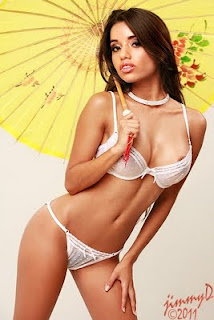 There was a time when being a photographer meant something. Well, it still means something but definitely something less. Certainly, something less in the eyes and minds of many non-photographers.
There was a time when being a photographer meant something. Well, it still means something but definitely something less. Certainly, something less in the eyes and minds of many non-photographers.When people ask me, "What do you do?" and I say I'm a photographer, it no longer gets much of a response. Leastwise, way less of a response than it once did. I know this sounds like my ego is complaining (and it's true that it is) but being a photographer, at least these days, doesn't often illicit more than usual interest from whomever is inquiring.
Back in the day, when people heard you were a photographer they were generally impressed and definitely more inquisitive about it. Back then, I suppose, being a photographer, i.e., one who made all or part of one's living from photography, seemed more exciting and awe-inspiring and, well, more respect was often forthcoming because, I'm guessing, photography seemed like something that was less pursued (as a career) and required more skill, know-how, and creative abilities than it does today. It should come as no surprise there were way fewer people pursuing photography as some sort of a career, full-time or otherwise, back then. (When I say "back then," BTW, I'm not referring to a few years ago. I'm talking about ten, twenty, thirty or more years ago.)
I'm not saying photography no longer requires those things, those skillful know-how and creative things. It does. Good photography does. But it doesn't seem that way, leastwise according to my perceptions of the perceptions of many non-photographers. Many of whom, unfortunately, might also be prospective clients.
Today, when someone learns you're a photographer, you're lucky if you get much of a response at all. Conversations about it might go something like this:
"What do you do?"
"I'm a photographer."
"Oh? You shoot weddings and stuff?"
"No. I shoot models."
"Oh. I'm an insurance adjuster."
Now I'm not saying there's anything wrong with being an insurance adjuster. There's not. Still, call me bat-shit crazy but one would think (when it comes to occupations) shooting models for a living would score higher on the Wow Meter than insurance adjusting does. Actually, I'm not saying insurance adjusting scores at all on the Wow Meter... but you still get what I"m saying, right?
You might be thinking I'm simply bitching out loud here...
You're right. I am. Deal with it.
Just about anyone and everyone who pursues creative careers has, well-earned or otherwise, an artistic ego. Often they have inflated-to-varying-degrees artistic egos. Having such an ego generally goes with the (creative) territory. If there's one thing people with artistic egos don't like, and that includes those with slightly enlarged artistic egos through those with wildly inflated artistic egos, it's people who don't recognize their uniqueness and appreciate all it takes to make a go of a creative career.
It's obvious, of course, why photographers don't get the ego strokes they once did. Today, there's too damn many people calling themselves photographers! The reality is that the uniqueness of being a photographer, someone who makes his or her living with cameras in their hands, has been seriously diluted and nearly reduced to ho-hum status.
So, you might be wondering where all this BS I'm typing is going. So am I. Other than blogging masturbation, I guess I'm simply venting and engaging in a bit of angst relief. For anyone wondering why I'm rather cynical about the current state of photography, especially as a vocation, even those who are amused or entertained by my cynicism, the reasons for it are the same things that cause me my angst. (And please don't think I'm somehow generally pissed at all those new photographers we see these days. I'm not. I'm just miffed at the ones who don't take the time to learn shit or hone their craft before they go out and compete with those who do.)
Whether my angst grew (and continues to grow) as a result of some sort of perceived Rodney Dangerfield Syndrome (real or imaginary) or from somewhere else or for some other reasons, it is what it is. What it is, of course, is mostly to blame for today's blog update, my angst, much of my cynicism, my jaded view of the world, and more.
As usual, I'm just saying.
The pretty girl at the top with the yellow, Chinese, umbrella and one nipple trying its best to pop out is Lupe. Easy on the eyes, ain't she? (Click to Enlarge)
One last time: You have about ten hours left. (It's currently 2:00 P.M., PST, on June 30th, 2011) to purchase either or both of my ebooks for 25% OFF their usual price of $9.95. Use discount code JUNESPECIAL when purchasing. Links to my ebooks, Guerrilla Glamour and Guerrilla Headshots can be found in the right-hand column of this page. That's it. I'm done pimping my ebooks for a while. You have ten or less hours left. This sale ends midnight tonight, PST.










